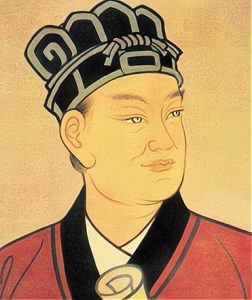8 Cai Lun
Scientists Name: Cai Lun |
Picture |
Time period: AD78 – AD 139Subject: polymath, chemistry |
|
Biography:Born in the Eastern Han Dynasty (AD 50), Cai Lun was raised in a poor family and served as a court eunuch from AD75. Although eunuchs had played an important role in serving imperial household in China, they were often oppressed and discriminated against in the history of imperial China because they were seen as a “third sex”. After receiving several promotions, Cai Lun was designated the “Prefect of the Palace Workshop”, who was in charge of manufacturing instruments and weapons for imperial uses. China had a long history of writing on bamboo and wooden slips, with alternatives such as writing on silk and cloth, which were too expensive for widespread uses. Attempting to address the issue, Cai Lun boiled bamboo, hemp waste, old rags, fishnets and tree barks to a pulp, which was then beaten before mixing it with water. After processing the resulting mixture with wodden sieves, the excess water was removed to make dried paper. There were many legends about how Cai Lun was inspired to invent paper: some of the most popular legends include that he was inspired by people of his birth place or by watching paper wasps making their nests. In AD105, Cai Lun publicly reported his discovery to the emperor, who was very impressed and pleased, and granted Cai Lun great fame and wealth. Despite his great achievement in paper invention, Cai Lun was involved in political conflicts and committed suicide after political power shift. |
|
Summary of their contributions:Cai Lun was the first person to invent paper and innovate modern paper-making process in 105 AD. With the addition of tree bark , hemp ends, old rags and fish nets, he innovated the paper-making process with lower costs, resulting in large-scale manufacture of paper. |
|
Integration with the BC Secondary Science Curriculum:
(adapted from BC science curricular competencies) |
|
References:Cai Lun Biography. (2017, March 23). Biography Online. https://www.biographyonline.net/business/cai-lun.html
Cai Lun, Chinese inventor. Encyclopaedia Britannica. https://www.britannica.com/biography/Cai-Lun |
|
